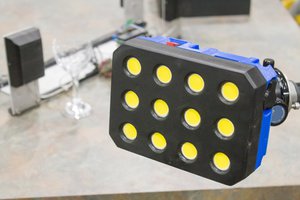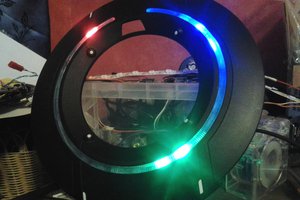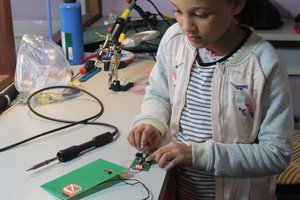This simple project embodies the maker ethic. It isn't about doing a full design and careful component selection - it is about rules of thumb, flying by the seat of your pants and building something fun with the junk you have to hand, for your family and others to enjoy!
About the only technical part of the design was the decision not to use a H-bridge but to use four logic-level outputs in parallel to drive each end of the LED string, and maybe the selection and placement the current limiting resistors.
The high logic level voltages are about 3.3V, and the LED string requires about 2.2V, leaving 0.55V to be dropped in either the output buffers or in one or more current limiting resistors. A single 10 ohm resistor at one end could work, but using a 27 ohm resistor on each output ensures proper current sharing and offers a little bit of overload protection.
Perhaps a true hardware hacker would rely on the I/O pin's 50mA current limiting, but that would be just too crass!


 Tyler Gerritsen
Tyler Gerritsen
 Christoph Tack
Christoph Tack

 Yann Guidon / YGDES
Yann Guidon / YGDES